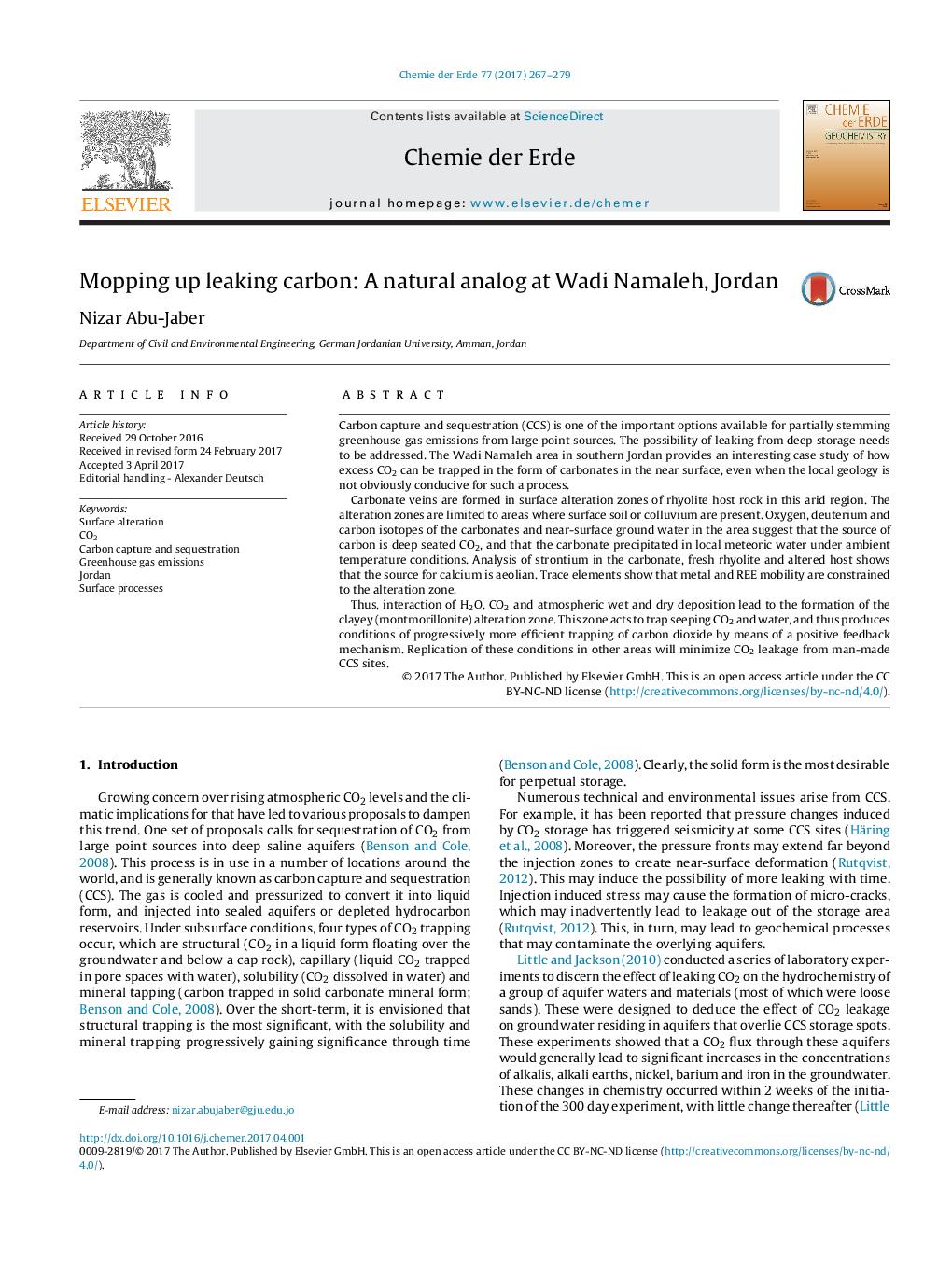| کد مقاله | کد نشریه | سال انتشار | مقاله انگلیسی | نسخه تمام متن |
|---|---|---|---|---|
| 5745610 | 1618710 | 2017 | 13 صفحه PDF | دانلود رایگان |

- The study highlights a unique situation where carbonate mineralization in felsic rocks is occurring.
- This situation is scientifically interesting, and confirms many laboratory studies that have never been verified in the field.
- Moreover, the results have the potential for improving the effectiveness of CCS where leaking may be occurring as well as mitigating damage that might arise from that.
Carbon capture and sequestration (CCS) is one of the important options available for partially stemming greenhouse gas emissions from large point sources. The possibility of leaking from deep storage needs to be addressed. The Wadi Namaleh area in southern Jordan provides an interesting case study of how excess CO2 can be trapped in the form of carbonates in the near surface, even when the local geology is not obviously conducive for such a process.Carbonate veins are formed in surface alteration zones of rhyolite host rock in this arid region. The alteration zones are limited to areas where surface soil or colluvium are present. Oxygen, deuterium and carbon isotopes of the carbonates and near-surface ground water in the area suggest that the source of carbon is deep seated CO2, and that the carbonate precipitated in local meteoric water under ambient temperature conditions. Analysis of strontium in the carbonate, fresh rhyolite and altered host shows that the source for calcium is aeolian. Trace elements show that metal and REE mobility are constrained to the alteration zone.Thus, interaction of H2O, CO2 and atmospheric wet and dry deposition lead to the formation of the clayey (montmorillonite) alteration zone. This zone acts to trap seeping CO2 and water, and thus produces conditions of progressively more efficient trapping of carbon dioxide by means of a positive feedback mechanism. Replication of these conditions in other areas will minimize CO2 leakage from man-made CCS sites.
Journal: Chemie der Erde - Geochemistry - Volume 77, Issue 2, May 2017, Pages 267-279